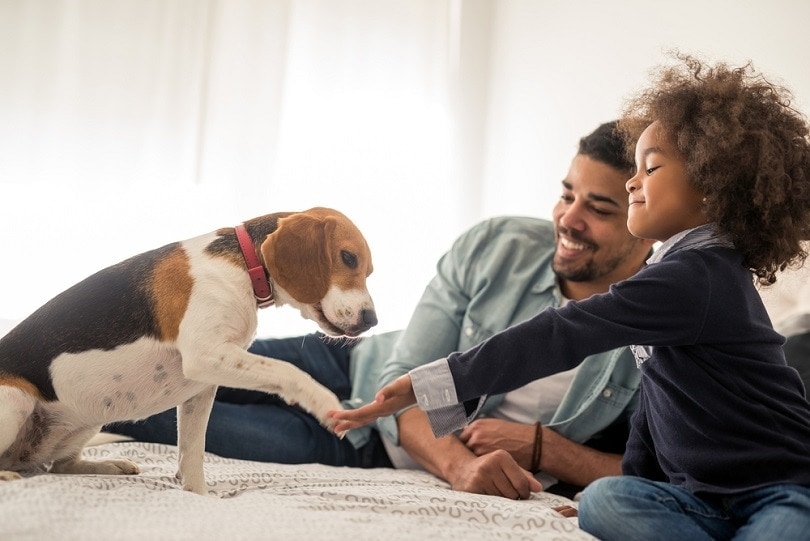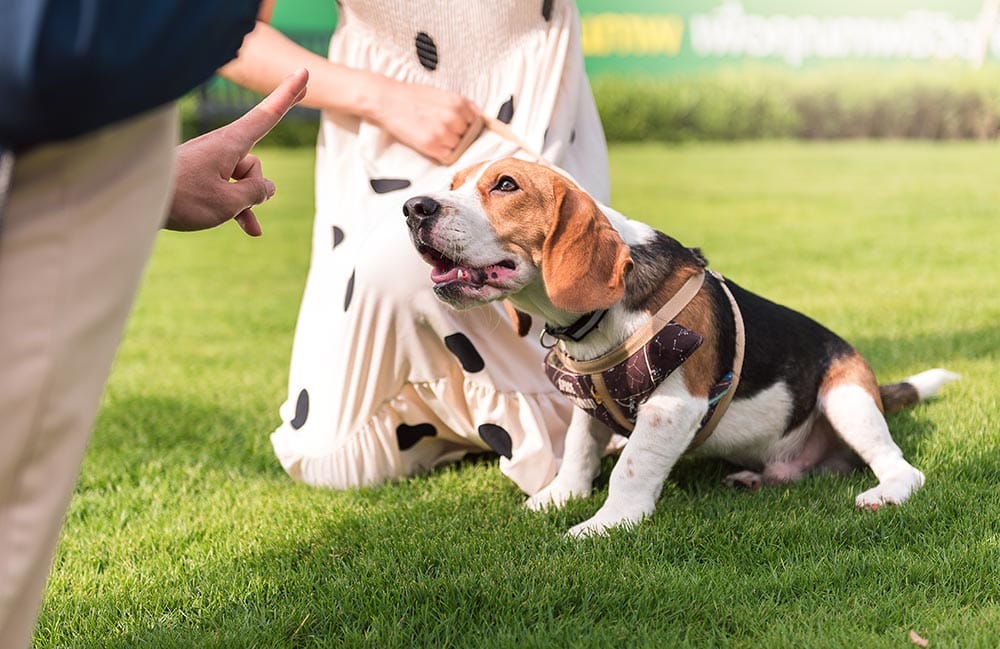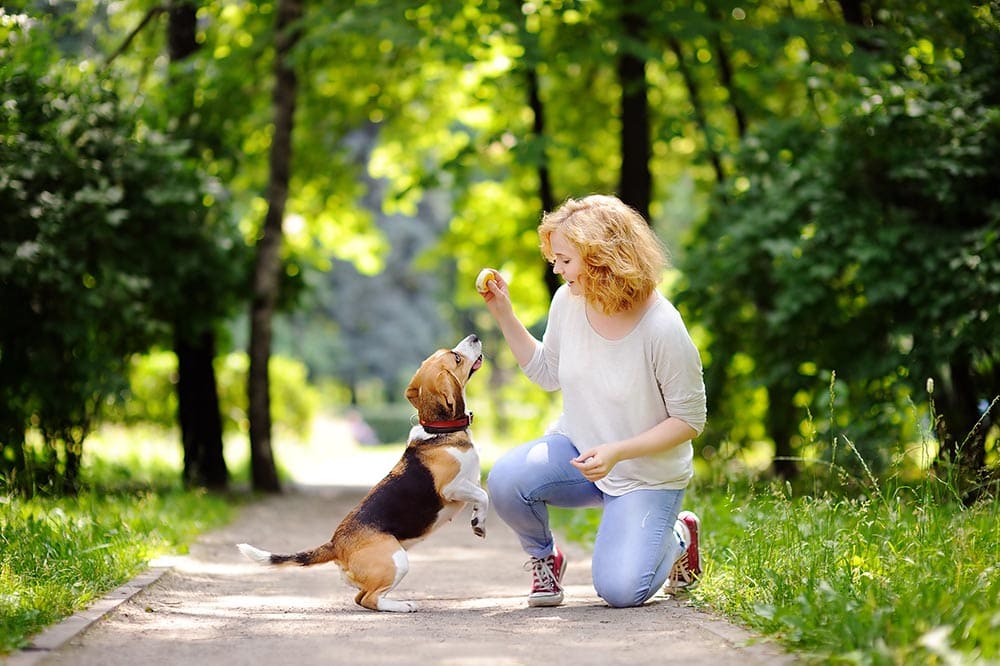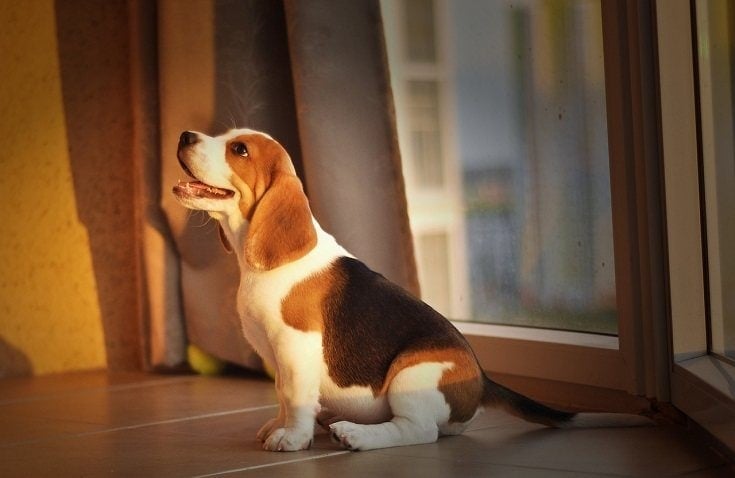Are Beagles Hard to Train? How to Train a Beagle

Updated on

If you’ve just brought home a Beagle puppy, you have your work cut out! Any puppy will take work to train, and some are especially tough cases. Beagles are cute, loving, and friendly dogs, but they have a reputation for being among the hardest dogs to train. The good news is that it’s not impossible—with a little patience, you’ll soon find out that “a well-trained Beagle” doesn’t have to be an oxymoron.
Beagle Obedience and Intelligence
It’s true that Beagles are less obedient than other breeds. In fact, in one dog behavior expert’s ranking of obedience and trainability, Beagles ranked in the bottom ten out of over a hundred breeds!
There are quite a few reasons that you don’t often see these dogs doing fancy tricks and winning obedience prizes. For one thing, these dogs tend to be very high-energy. With so much excitement for the world around them, it’s not surprising that they have a hard time buckling down and listening to their owners.
Beagles are also a relatively independent, stubborn breed. This can be good in some ways, but it does mean that many training techniques will just result in your Beagle buckling down. But there are lots of breeds that are stubborn and high-energy. The thing that really sets Beagles apart is their sense of smell.

All About Beagle Sniffers
Everyone knows that dogs have powerful noses, but not all dogs are created equal. Beagles have some of the best sniffers of any dog out there, honed by generations of breeding for hunting. They tend to experience the world through their noses even more than other breeds. In fact, they’re often top candidates for scent detection training despite their stubbornness!
But this rich world of smell does have its downsides. Since Beagles are hardwired to track interesting scents, they often have quite short attention spans for anything else. The training you try to impart on your Beagle might not register because they’re so distracted by a smell you can’t detect.
Tips for Training a Beagle
The general principles of dog training are the same across all dog breeds. But because Beagles are harder to train, you’re going to need to work a little harder and be a little more consistent to get good results than you would with other dogs. Here are some things to keep in mind as you work on training.
Be Firm and Consistent

Consistency is key with all dogs, but especially Beagles. Since they need more repetitions to learn a new behavior, any inconsistency is a big step back. Acting firm and consistent will also help a stubborn Beagle know that it isn’t worth fighting you on an issue. Giving in occasionally will reinforce that rules and commands are optional.
Use Rewards, Not Punishment

Even though firmness is good, you shouldn’t ever be angry or punish your dog physically for breaking the rules. Use treats to reward good behavior, especially when you’re working on a new command. Bad behavior should be stopped but punishment is generally counterproductive. It’s better to be consistent and clear.
Build From Basic Commands

Every dog should know a few basic commands, such as “sit,” “stay,” and “come.” Starting with these basics will help your dog learn important skills, including how to learn a command and listen to you. Consider using a clicker to help you train along with verbal and visual commands. Once your dog has a few basic building blocks learned, other commands will be easier.
Keep Training Sessions Short

Dedicated training sessions are helpful, but they should be matched to your Beagle’s attention span. Frequent but very short sessions are best. In fact, training sessions of under five minutes are usually enough. Short training sessions also give you more chances for spaced repetition—practicing a skill with a gap in between. Spaced repetition is the best way to make a solid memory that your Beagle will never forget.
Start Them Young

Puppies are difficult to train because of their energy, but that’s no reason to wait. By the time a puppy is ready to leave its mother, it’s able to learn commands. Although you can teach an old dog new tricks, leaving training until your puppy is older generally just leads to bad habits that will need breaking later.
Keep Your Beagle Stimulated

One of the most important factors of dog misbehavior is a lack of stimulation. Beagles need to be kept busy with frequent walks and playtime, lots of social interaction, and an environment where they are happy and comfortable. Many Beagle problems, like howling, can be reduced or eliminated entirely if your Beagle isn’t bored or lonely.
Last Thoughts
Every dog breed has its own quirks and things to be aware of, and there’s definitely a reason Beagles have the reputation of being hard to train. Between their energy, their independence, and their short attention spans, they may need a little more work to learn a new behavior.
But they can also be loyal, obedient companions that will do their trainers proud. It just takes some patience along the way. Even though Beagles are a little tricky to train, we hope this article gives you the confidence to get going!
See also:
- How Big Do Beagles Get? With Growth & Weight Chart
- How to Leash Train a Beagle: 10 Awesome Tips and Tricks
Featured Image Credit: Madeeva_11, Shutterstock













